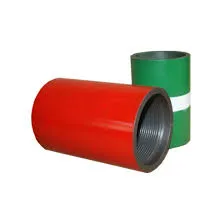- Afrikaans
- Albanian
- Amharic
- Arabic
- Armenian
- Azerbaijani
- Basque
- Belarusian
- Bengali
- Bosnian
- Bulgarian
- Catalan
- Cebuano
- Corsican
- Croatian
- Czech
- Danish
- Dutch
- English
- Esperanto
- Estonian
- Finnish
- French
- Frisian
- Galician
- Georgian
- German
- Greek
- Gujarati
- Haitian Creole
- hausa
- hawaiian
- Hebrew
- Hindi
- Miao
- Hungarian
- Icelandic
- igbo
- Indonesian
- irish
- Italian
- Japanese
- Javanese
- Kannada
- kazakh
- Khmer
- Rwandese
- Korean
- Kurdish
- Kyrgyz
- Lao
- Latin
- Latvian
- Lithuanian
- Luxembourgish
- Macedonian
- Malgashi
- Malay
- Malayalam
- Maltese
- Maori
- Marathi
- Mongolian
- Myanmar
- Nepali
- Norwegian
- Norwegian
- Occitan
- Pashto
- Persian
- Polish
- Portuguese
- Punjabi
- Romanian
- Russian
- Samoan
- Scottish Gaelic
- Serbian
- Sesotho
- Shona
- Sindhi
- Sinhala
- Slovak
- Slovenian
- Somali
- Spanish
- Sundanese
- Swahili
- Swedish
- Tagalog
- Tajik
- Tamil
- Tatar
- Telugu
- Thai
- Turkish
- Turkmen
- Ukrainian
- Urdu
- Uighur
- Uzbek
- Vietnamese
- Welsh
- Bantu
- Yiddish
- Yoruba
- Zulu
Exploring the Benefits and Applications of Tubing Crossovers in Modern Industrial Practices
Understanding Tubing Crossover A Key Concept in Oil and Gas Operations
In the oil and gas industry, terminology can often seem daunting due to its technical complexity. One such term is tubing crossover, which plays a crucial role in the extraction process of hydrocarbons from the Earth. This article aims to unpack the concept of tubing crossover, its significance, and how it impacts the overall efficiency of drilling operations.
What is Tubing Crossover?
Tubing crossover refers to the scenario in which a section of tubing is installed in a well to allow for the transportation of oil or gas, while simultaneously providing access for tools or equipment to be deployed. This dual-function system is pivotal in optimizing both production and maintenance of well operations.
The tubing itself is a type of pipe used to convey fluids to the surface from below the Earth's surface. Unlike casing, which provides structural integrity to a well and prevents the collapse of the surrounding rock, tubing is designed for the primary purpose of fluid movement. In crossover operations, specific equipment, such as packers or control devices, is integrated within the tubing string to manage flow and pressure effectively.
The Significance of Tubing Crossover in Drilling
1. Enhanced Production Efficiency Tubing crossover allows for the simultaneous flow of multiple fluids, which can significantly enhance production efficiency. By facilitating the concurrent movement of oil and gas, operators can maximize output from a single well, minimizing downtime and resource expenditure.
2. Versatility in Operations The design and function of tubing crossover systems lend themselves to versatility in operations. Operators can easily switch between different fluids or even switch between production and injection modes. This flexibility is invaluable, especially in complex reservoirs where fluid characteristics may change over time.
tubing crossover

3. Reduced Risks The introduction of tubing crossover systems helps reduce the risk of equipment failure. By allowing the use of specialized tools directly through the tubing, operators can conduct maintenance and troubleshooting without the need for extensive interventions, thus minimizing the risk of spills or blowouts.
4. Improved Monitoring and Control With advanced technologies, tubing crossover systems are increasingly fitted with monitoring devices that provide real-time data on well conditions. This information is crucial for making informed decisions regarding production strategies, allowing for timely interventions when necessary.
Challenges and Considerations
While tubing crossover systems offer numerous advantages, there are also challenges that operators must navigate. The installation of a crossover system requires rigorous planning and engineering to ensure that it can withstand the high pressures and corrosive environments typical of oil and gas wells. Additionally, maintenance of these systems can be complex, necessitating skilled labor and specialized tools.
Moreover, there is an increasing demand for environmentally responsible practices, pushing the industry to consider the implications of tubing crossover operations. Operators must ensure that these systems do not contribute to leaks or other environmental hazards, adhering to regulatory standards while maintaining productivity.
Conclusion
In conclusion, tubing crossover represents a significant advancement in oil and gas extraction techniques, enhancing efficiency and productivity while simultaneously allowing for better monitoring and control of operations. As technology continues to evolve, tubing crossover systems will likely become even more sophisticated, further transforming how the industry approaches natural resource extraction. By understanding and optimizing this concept, operators can navigate both current challenges and future opportunities in the dynamic landscape of oil and gas production.
-
Tubing Pup Joints: Essential Components for Oil and Gas OperationsNewsJul.10,2025
-
Pup Joints: Essential Components for Reliable Drilling OperationsNewsJul.10,2025
-
Pipe Couplings: Connecting Your World EfficientlyNewsJul.10,2025
-
Mastering Oilfield Operations with Quality Tubing and CasingNewsJul.10,2025
-
High-Quality Casing Couplings for Every NeedNewsJul.10,2025
-
Boost Your Drilling Efficiency with Premium Crossover Tools & Seating NipplesNewsJul.10,2025







